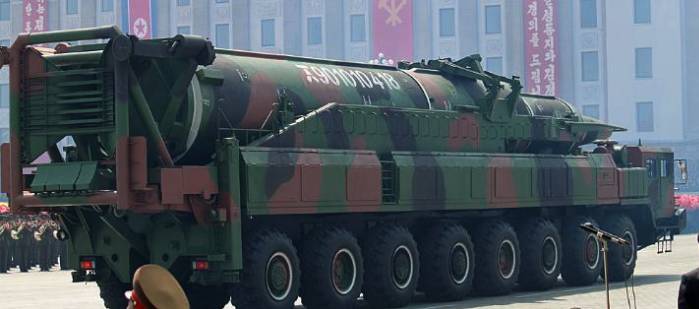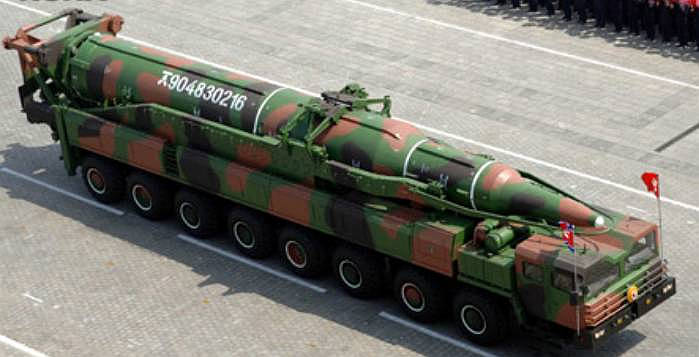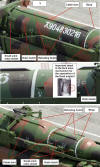|

The paraded six HS-13 and eight "Musudan" missiles



|
Analysts
estimate that - at least for the first stage of the rocket - a technology
of the Soviet R-27 SLBM
is used (the main engine is placed inside of the fuel tank).
An application of the R-27 technology would be not a possibility because
about 250 kN thrust of a R-27 engine is not enough for this monster. Two
engines to combine is technically in this case difficult.
An acceptable thrust of about 500 kN has the engine of an old Russian
R-29 SLBM
(RSM-40
Vysota) with similar technology.
|
My analysis
|
|

|

|
Attention
analysts, the missile is certainly not yet complete, but not a fake!
I think that the KN-08 is not a fake, and North Korea working on developing
a LRBM. The technology is based on a proven (!!) template. North Korea
does not have the know-how and financial resources to develop such a complicated
missile with new liquid rocket engines.
With high probability is the technology not Chinese. China has never developed
a "submerged engine" technology, or used. Furthermore, it is against China's
doctrine such significant potential of rocket technology to export. China
has supplied only complete missiles to Pakistan and Saudi-Arabia (Shaheen,
DF-3).
The delivery of the large TELs to North Korea must based on a "misjudgment".
Note: UN investigators recently concluded that
North Korea had six Chinese lumber transporter WS51200 bought, and in
TELs (Transporter Erector Launchers) for its KN-08 ballistic missiles
converted.
The noted differences between the rockets - missing retro-rockets, different
length of cable ducts and different positions of covers - are optical
illusions or evidence for the incompleteness of the rocket. A slightly
shifted retaining band on one rocket (No. 218) is not relevant for the
analysis.
But a puzzle for my proposal is the interrupted cable duct between first
and second stage. Why is this interruption on No.18 so short? It
is impossible to find an interstage section.
|

|
|
Cable duct comparison
|
Want
they to confuse us, or is it a mock-up. Is it really a mock-up, then has
but this missile a serious technological background.
Analysts
argue that the use of UDMH/N2O4 as fuel for the road-mobile missile KN-08
is no option because the risk is not acceptable. But the refueling would
be possible before the launch in the erect position !
|

|
New interisting details: Weldings,
small nozzle, inlet for drain " fuel pump"
Source: armscontrolwonk.com |
|